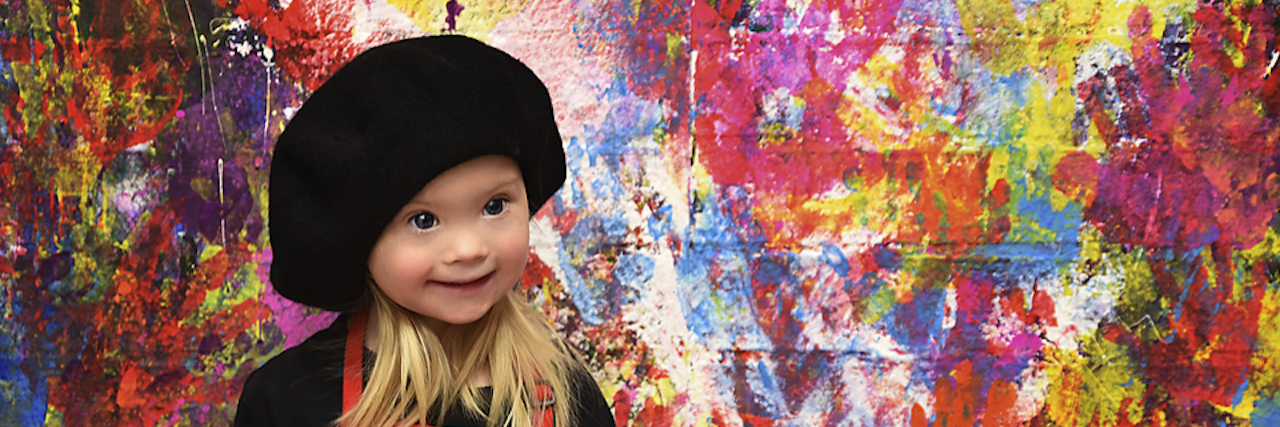Last fall I was put in contact with author, Sharita Manickam, and photographer, Jennifer Bruno. They were in the infancy stages of creating a children’s book. Their concept was to photograph young girls as professionals in fields that have been traditionally dominated by men. They were particularly interested in showing as much diversity among the girls as possible and the person who put us in touch thought my daughter, Frankie, who has Down syndrome, would be a perfect fit.
I could see why she thought that. I had recently written a post for The Mighty on how important it was for Frankie to be empowered the same way every girl should, and I was interviewed for a podcast on the same topic. This thought of, how do we help girls with Down syndrome to feel strong and smart and powerful in order to set them up for future success, has very much been on my mind. But to be honest, when offered the opportunity to show her as just that, I hesitated.
I worried about what people would think. Would they disregard a photo of her as a professional as unrealistic? Would they think it was laughable? Would it ruin the credibility of the project?
Luckily, I set myself straight almost immediately as I realized this apprehension that the public might not be able to see past her disability is the very thing that continually holds people with Down syndrome back, both socially and professionally. I am supposed to be her advocate, and here I was playing into the stereotype myself.
I think people with Down syndrome are in a really unique position at this point in time. Previous generations have fought fiercely for the right to be included in all settings, and especially for educational opportunities from preschool through to post-secondary programs. The children we are raising now, finally have the chance to reap the rewards of these hard won battles. Their futures are bright, and so many doors have been opened into meaningful employment. But public perception still dictates the roles they have access to.
Now is the perfect time to put images of people with Down syndrome achieving professional success into the mainstream — both to combat stereotypes and to inspire young people with Down syndrome. When we talk about empowering young girls, we often say “If they can see it, they can be it.” This is also, and especially, true of those with disabilities. Participating in this project offered a chance to reach beyond our inner circle to show a child with a disability in a viable profession. It will hopefully challenge the preconceptions of its readers and make them think: “Actually, why not?”
But I still wanted to be thoughtful as to what Frankie was to be photographed as. After conversations with Jen and taking some inspiration from a news piece I recently saw on Sophia Pineda, a teen with Down syndrome who paints stunning watercolors, we agreed Frankie would be an artist.
Being included in the book titled, “Rad Girl Revolution,” where Rad stands for Rise Above Doubt and Reach Any Dream, sends a message that all girls can be successful in their chosen job. In the book you will see Frankie pictured as an artist, which is totally achievable, as disability does not preclude talent. You will see her among her peers, disproving the idea that girls with Down syndrome do not have the same aspirations typical kids do and cannot work hard to achieve their dreams. You will see her appear as a functioning member of a society, dispelling the myth that people with Down syndrome are a burden to their communities and that they cannot “give back.”
You will be challenged to look beyond her disability to see her as successful, inspiring and included. At first glance, she may stand out among the other girls in “Rad Girl Revolution” because you may make assumptions about her abilities based on her diagnosis, but I can attest, she is more alike than different. She may have Down syndrome, but she has ceilings to shatter, too.
“Rad Girl Revolution” is available for pre-order until May 8.

